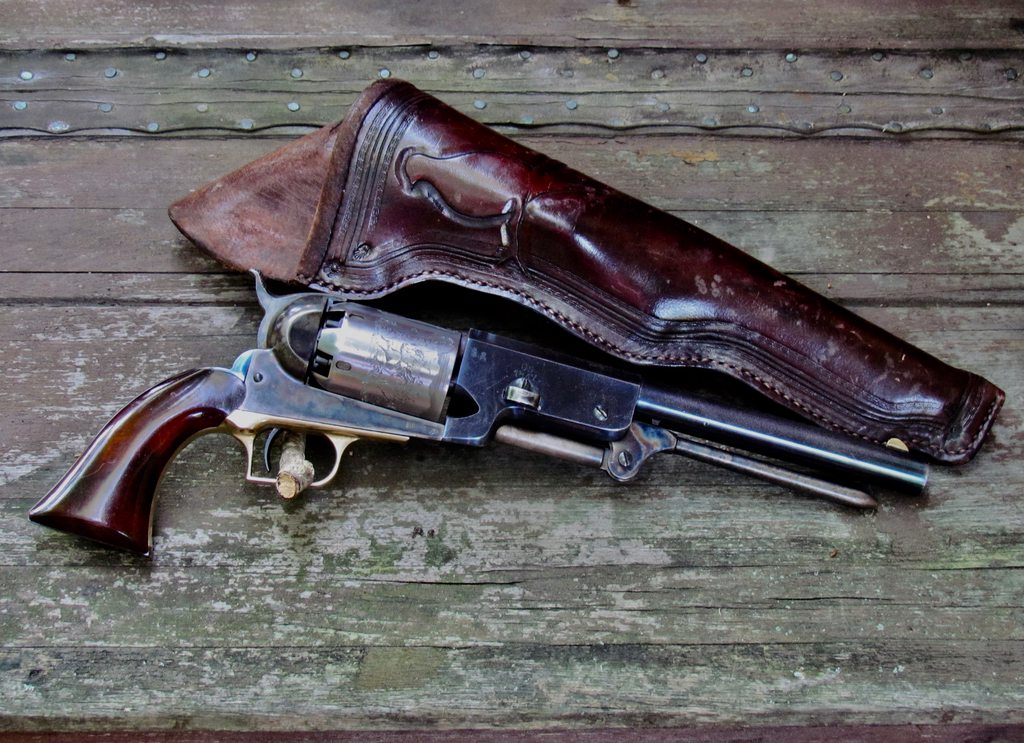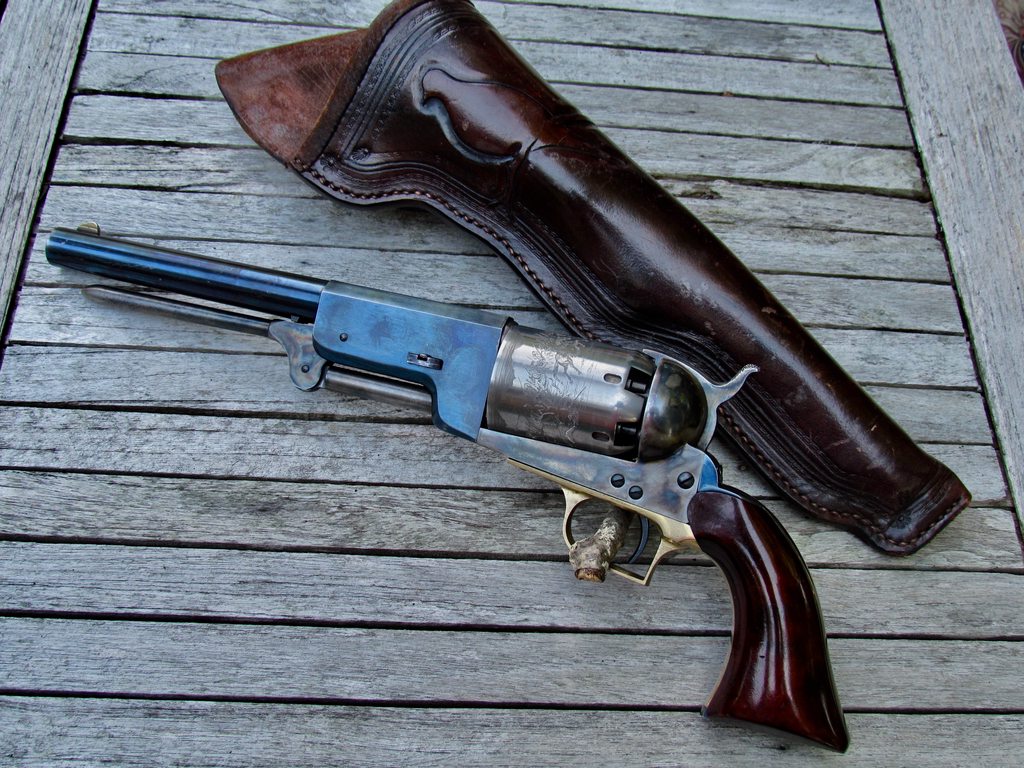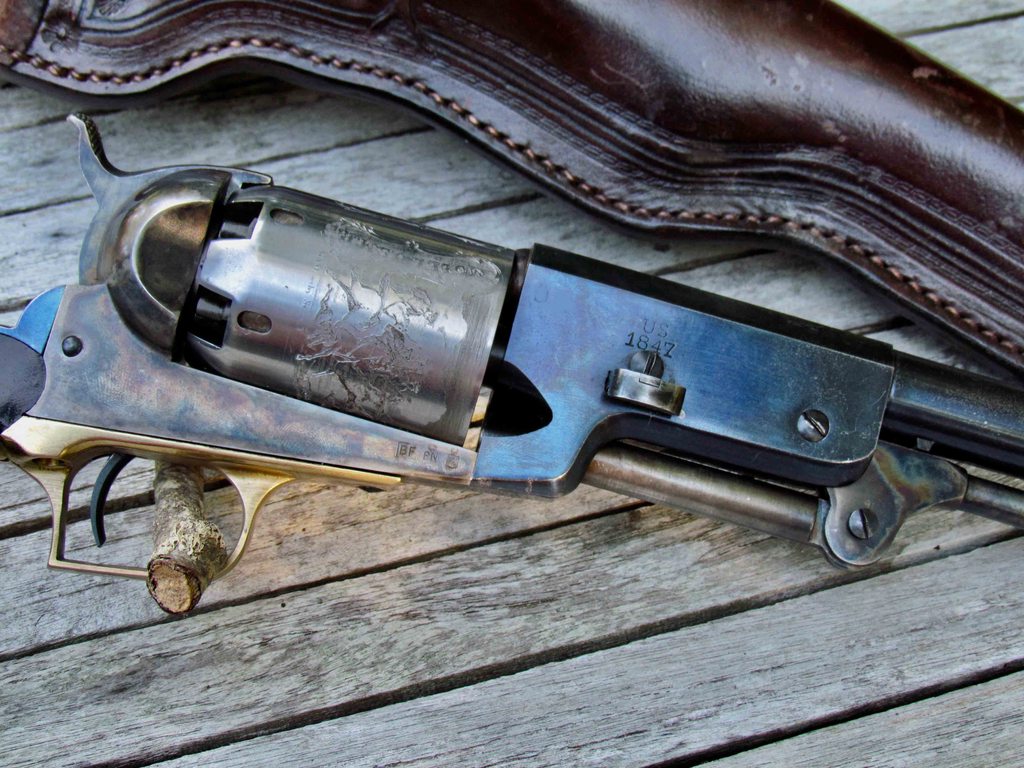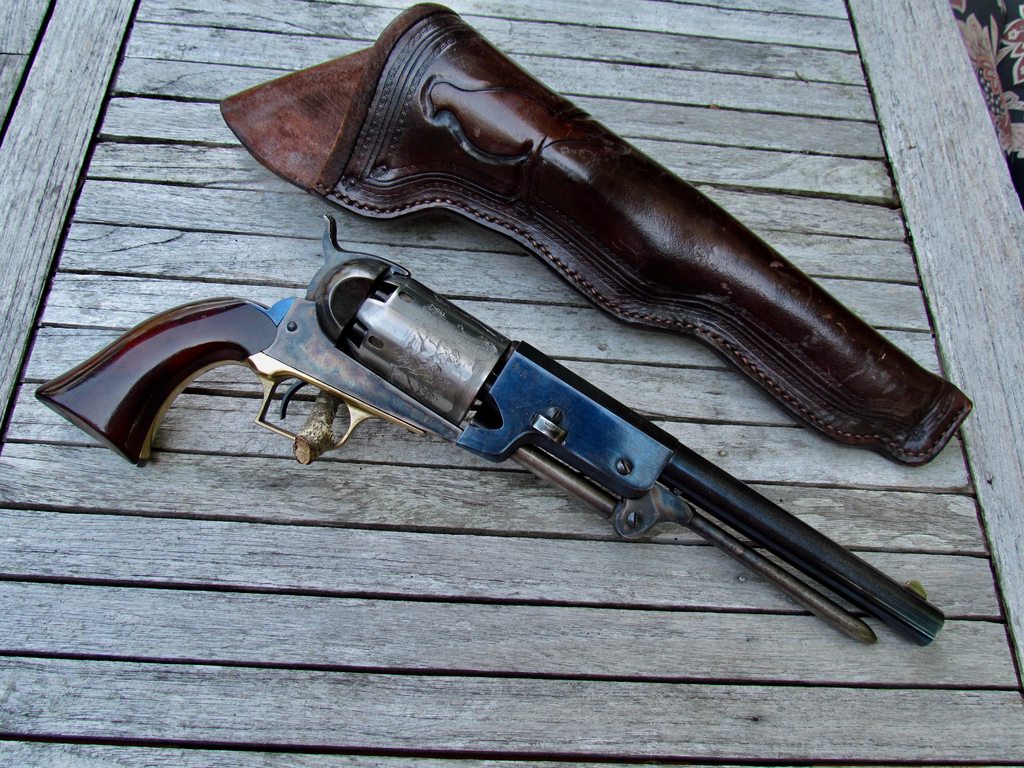- Joined
- May 30, 2020
- Messages
- 831
- Reaction score
- 742
I wanted to start my own thread rather than thread crash the poor soul who've I've been thread crashing regarding Walker pistols! I recently picked this Walker up for a crazy deal that included the pictured vintage Meyer holster. Unlike some of the more talented amoung us I'm not capable of making the kind of holster I wanted ( Slim Jim) and then finishing the leather.
I'm posting to get some hands on feedback. I wanted to take down the bluing of the pistol and have the materials for the job. My question is how to go about it. Rather than removing the bluing entirely I'd like to slowly take it down so traces of faded-blue -turned-brown remain in the recesses.
I havewhite vinegar and EvapoRust on hand, as well as some Birchwood Super Blue paste and Plum brown. I don't want to immerse the pistol but rather use a soft cloth to go more slowly, for gradual vs instant results.
Have any of you done this work on percussion pistols ? By all means please post your experiences and pictures in this thread, looking to gain the knowledge!




I'm posting to get some hands on feedback. I wanted to take down the bluing of the pistol and have the materials for the job. My question is how to go about it. Rather than removing the bluing entirely I'd like to slowly take it down so traces of faded-blue -turned-brown remain in the recesses.
I havewhite vinegar and EvapoRust on hand, as well as some Birchwood Super Blue paste and Plum brown. I don't want to immerse the pistol but rather use a soft cloth to go more slowly, for gradual vs instant results.
Have any of you done this work on percussion pistols ? By all means please post your experiences and pictures in this thread, looking to gain the knowledge!














